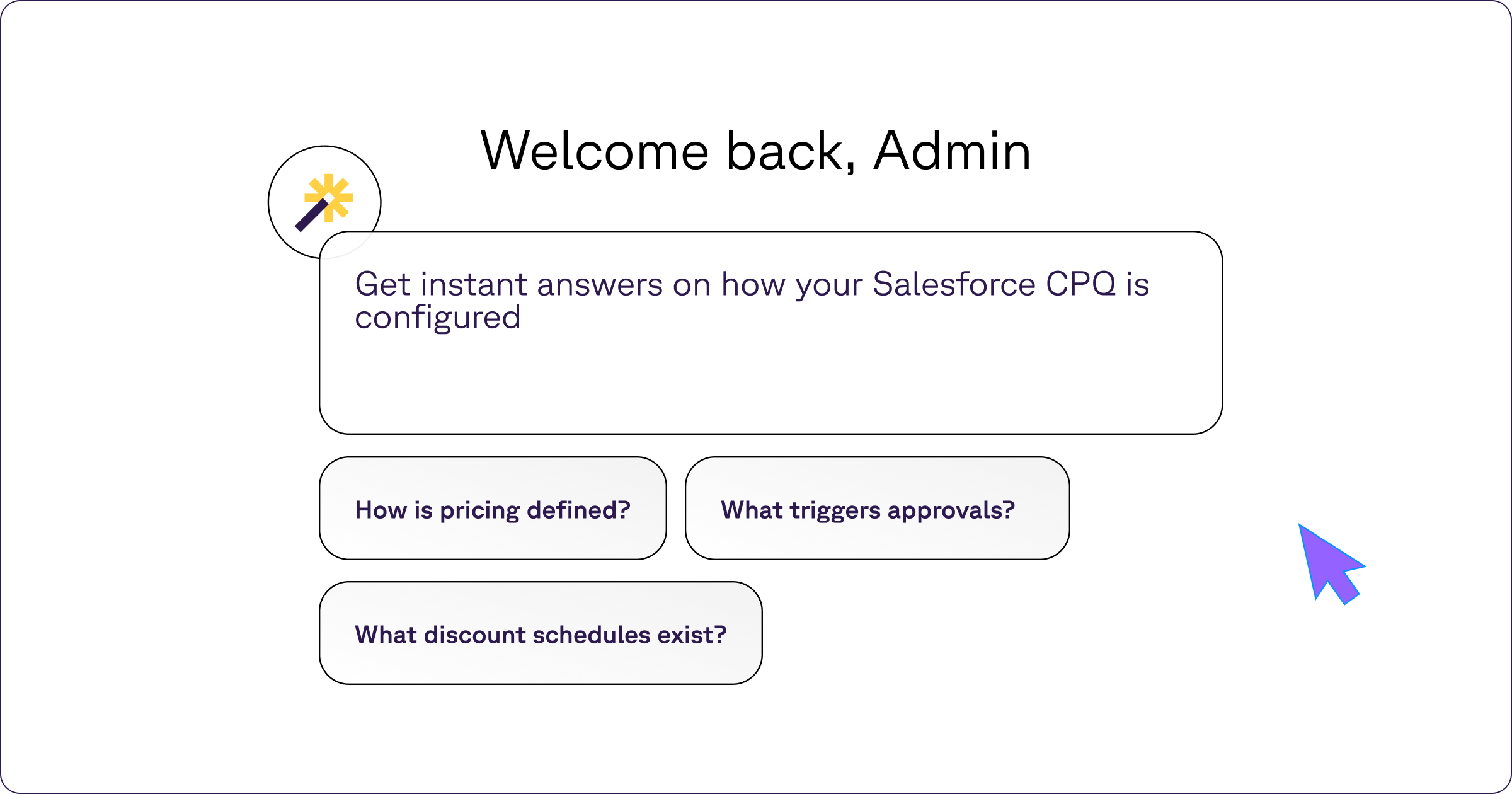Salesforce has officially moved its legacy Configure, Price, Quote (CPQ) product into End of Sale (EOS). That means no new customers can purchase the product, no new features will be added, and existing users are left at a crossroads.
While current customers will continue to receive support and can renew their licenses, the writing is on the wall: this product is no longer a priority in Salesforce’s roadmap. If CPQ is critical to your sales motion, now is the time to start planning your future.
What does End of Sale mean for Salesforce CPQ customers?
Salesforce CPQ is not disappearing overnight. But here’s what EOS means in real terms:
- No new customers: Salesforce has stopped selling CPQ to new logos.
- Ongoing support for existing customers: If you already have CPQ, your team can continue to use it and renew your licenses.
- No new features or enhancements: The product will remain static, no new capabilities, UI improvements, or integrations will be released.
This creates a growing technical and operational risk. Your CPQ logic and dependencies will age out of alignment with Salesforce’s platform evolution and ecosystem priorities. Every quarter you delay a transition, the cost of migrating compounds.
How companies traditionally migrate off CPQ
For organizations with highly customized CPQ implementations, the idea of switching platforms can be daunting. The traditional migration path typically includes:
- Manual system audits: Reviewing hundreds of pricing rules, custom scripts, and product bundles by hand
- Discovery workshops: Interviewing admins and sales ops to understand tribal knowledge and undocumented logic
- Spreadsheet-based gap analysis: Trying to piece together what exists, what’s working, what’s not
- Lift-and-shift or full rebuild: Recreating logic in a new platform like Salesforce Revenue Cloud Advanced (RCA).
This process is time-consuming, error-prone, and often heavily reliant on external consultants.
You generally have two options to execute this:
Option 1: Hire external consultants
Consulting firms can bring CPQ-specific expertise and best practices, but there are real tradeoffs:
- Cost: High hourly rates add up quickly, especially for multi-phase projects
- Context loss: External teams often lack intimate knowledge of your sales process, leading to missed nuances or misaligned rebuilds
- Dependency risk: You may become overly reliant on external resources for future maintenance or change management
Option 2: Use internal teams
Tapping your own RevOps, Admin, or IT team keeps institutional knowledge close, but it has its own risks:
- Opportunity cost: Diverts key team members from roadmap-critical initiatives or day-to-day support
- Burnout risk: Migration tasks are often tedious and manual, increasing team fatigue
- Documentation gaps: If your system isn’t already well-documented, even internal teams may spend weeks rediscovering their own logic
Whether you go external or internal, the traditional approach is slow, fragile, and hard to scale, especially without a shared source of truth.
What AI unlocks: A smarter, safer way to migrate
AI enables a fundamentally different approach to CPQ migration:
- Automated discovery: AI can scan your Salesforce metadata, page layouts, rules engines, and object relationships to build a real-time map of your quoting architecture
- Logic summarization: Instead of just listing config items, AI explains how quoting logic flows, where dependencies exist, and where risks lie
- Intelligent clustering: Grouping functionality into logical modules, pricing, approvals, discounts, etc., to simplify planning
- Impact analysis: Understanding what breaks if you change or remove a rule, reducing guesswork and testing burden

How Sweep accelerates CPQ migration with agentic AI
Sweep’s Documentation Agent is built to handle complex Salesforce migrations. Here’s how it works:
- Map all CPQ functionality
Sweep scans your existing Salesforce environment to capture every object, rule, approval flow, product structure, and dependency tied to quoting.
- Explain it in natural language
It translates your CPQ logic into accessible documentation, making it easier for RevOps, IT, and leadership to align on what exists and what needs to change.
- Surface cleanup opportunities
Sweep flags unused fields, duplicate automations, outdated approvals, and other areas prime for simplification before migration.
- Generate a migration plan
Develop a structured plan that defines what to rebuild, what to retire, and what can be improved, ready for Salesforce RLM or any other CPQ platform.
Don’t wait for a hard deadline
End of Sale is often the first domino. While support may continue for now, relying on a static, unsupported product adds technical debt and increases risk over time. This isn’t just a migration moment, it’s an opportunity to:
- Improve sales process clarity
- Eliminate quoting complexity
- Future-proof your revenue operations
With Sweep, you can treat migration not as a disruption, but as a strategic upgrade. Book a demo to learn more about Sweep's Documentation Agent.

